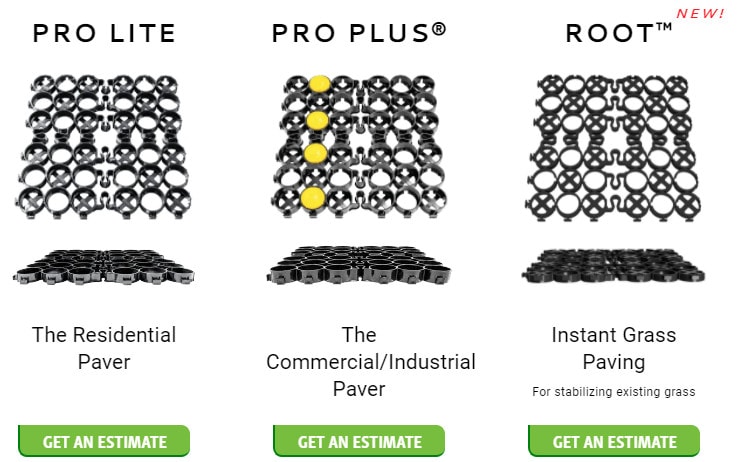Heavy-Duty Pavement: Choosing the Best Solution for High Traffic and Heavy Load Applications
Balancing project requirements and environmental concerns are becoming more important with every new project, particularly where heavy-duty pavement is required to manage high traffic and heavy loads. For modern heavy-duty pavement design and construction, TRUEGRID PRO PLUS commercial permeable pavers balance all of these factors with ease.
Traditional Heavy-Duty Paving Options vs. Natural Ground Cover
Natural ground cover is typically several layers of soils of varying permeability, held in place by plant growth. It is naturally a great rainwater retention system, preventing excessive runoff, erosion, and contamination as it absorbs rainfall. Thus, rainwater replenishes aquifers and gradually makes its way to streams, rivers, lakes, and oceans. Since natural ground cover doesn’t absorb much heat, surface temperatures will remain relatively cooler.
Breaking ground for driveways, parking areas, and commercial or industrial staging areas disturbs this natural protective layer. For decades, heavy-duty pavement options were limited to impermeable materials such as asphalt, concrete, or pavers. While these heavy-duty paving materials adequately manage heavy loads and high traffic, they are a major problem for the environment.
- Runoff from impermeable road surfaces leads to flooding, erosion, and contamination of streams and rivers.
- Impermeable surfaces prevent rain from absorbing into the ground where it could replenish groundwater and aquifers.
- Detention ponds and runoff retention areas can be built into the site to offset environmental hazards but take up valuable square footage and may be undesirable from a design standpoint.
- Inadequate grading or poorly designed runoff areas or retention ponds can hold stagnant water, the perfect breeding area for undesirable insects such as mosquitos and flies.
- Because asphalt and concrete absorb heat, local temperatures are relatively higher.
Permeable surfaces, such as gravel and turf, are better for the environment and don’t require additional detention or retention areas. Unfortunately, unstabilized turf and gravel can’t manage heavy loads or high traffic for very long, even if properly built-up – permeable concrete and porous asphalt pavements are both unacceptable in heavy-duty pavement applications. Gravel and turf areas may at first function like natural ground cover, but compaction due to heavy loads and high traffic eventually eliminates these benefits. Turf and gravel parking areas and driveways inevitably lead ruts, puddles, mud, bumps, and high maintenance costs, leading to some of the very same problems as impermeable surfaces.
Heavy-Duty Paving Solutions with TRUEGRID PRO PLUS Permeable Pavers

TRUEGRID PRO PLUS Permeable Pavers is one of the best heavy-duty pavement solutions, balancing your commercial heavy-duty pavement needs with environmental protection constraints and aesthetic design demands. Made of 100 percent post-consumer recycled high-density polyethylene, TRUEGRID PRO PLUS Permeable Pavers are environmentally friendly, lightweight, and easy to install. Once installed and filled, they can handle up to H-20 and HS-20 loading, for installation in parking areas, high traffic zones, equipment yards, construction site entrances, storage lots, and other heavy-use areas. They are ADA compliant. Every project is slightly different, but every heavy-duty paver installation requires three main elements for load bearing, traffic wearing, and environmental protection.
- First, subgrade preparations set the slope and depth of the final load bearing surface, allowing for at least 8 inches of sub-base and 2 inches of PRO Plus Permeable Paver grid – increase the depth of the sub-base to allow for higher loads or more water retention. Permeable or semipermeable geotextiles may be necessary between the sub-base and subgrade.
- Second, select the appropriate sub-base material. For gravel surfaces and best permeability, 3/4- to 1-inch angular gravel or Class 2 road base are excellent options. For grass surfaces, a 60/40 gravel/sandy-soil mix is recommended. After leveling, TRUEGRID PRO PLUS Permeable Paver grids are laid out, interlocking with each other across the entire paving surface. Trim edges and around obstacles with a saw.
- Finally, after tamping, fill TRUEGRID PRO PLUS Permeable Paver grids with the medium of choice. Angular or round gravel, 5/8- to 3/4-inch, allows for high permeability and extreme loading. Gravel/sandy-soil 60/40 mix is typical for grass seeding. Grass sod can be pressed into the grid for high traffic areas or laid on top for low traffic areas, both methods being suitable for heavy loads.
Heavy-Duty Pavement Design with TRUEGRID PRO PLUS Permeable Pavers
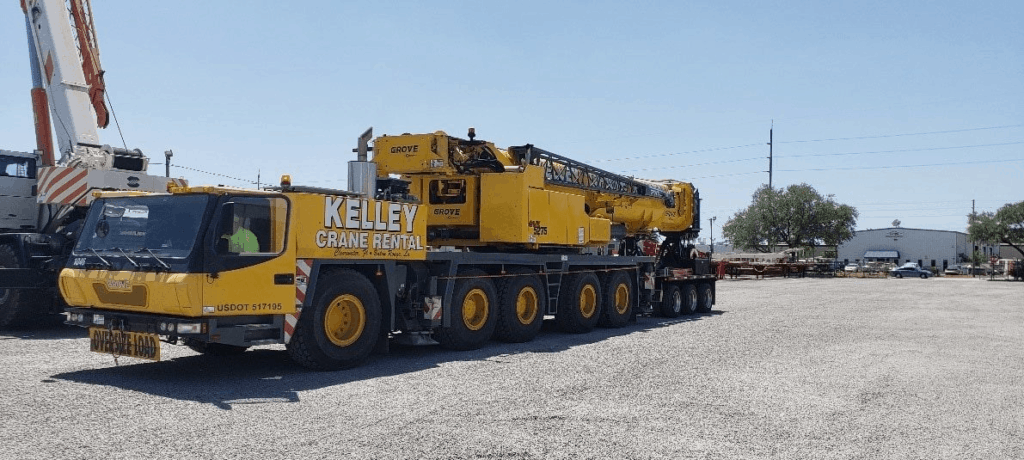
Because TRUEGRID PRO PLUS Permeable Pavers are 100 percent permeable and infinitely customizable, they can be used in many ways. Primarily, because water detention is built into the sub-base, TRUEGRID PRO PLUS Permeable Pavers eliminate the need for water detention ponds or runoff areas. This reduces construction and maintenance costs and frees up valuable square footage for better use. Once installed, TRUEGRID PRO PLUS Permeable Pavers require near-zero maintenance and lasts over 20 years. LEED Credit opportunities include stormwater management, recycled content, innovation & design, materials & resources, and heat island effect.
Aside from choosing your own fill, TRUEGRID PRO PLUS Permeable Pavers offer several customization options for your heavy-duty pavement design:
- TRUEGRID DECO can be used alongside PRO PLUS-equipped driveways and parking lots to delineate walkways or casual areas.
- TRUEGRID SuperSpot Reflectors and High Visibility SuperSpot parking markers snap into PRO PLUS pavers before filling to mark parking spaces, walkways, fire lanes, or direct traffic. No painting required!
- TRUEGRID PLATES can be used to number parking spots, handicap parking, fire lanes, no parking zones, or anything your project requires. No painting needed!
If you’re breaking ground on a construction or renovation project and need permeable ground cover for high traffic and heavy loads, contact TRUEGRID for an expert consultation and customization for your TRUEGRID PRO PLUS Permeable Paver system.
There are two primary types of pavement: pervious and impervious. Pervious pavement is designed to let water naturally seep through it and go down into the soil beneath. Impervious pavement does not allow water to seep through it. Instead, with impervious pavement, water runs off into storm drains that are lined along the road or paved surface at particular intervals.
Currently, a large percentage of roads and urban areas are comprised of impervious pavement. However, pervious pavement is becoming increasingly popular due to its many advantages over impervious pavement. Here is a look at some of the key problems with impervious pavement as well as the important benefits of pervious pavement.
Disadvantages of Impervious Pavement
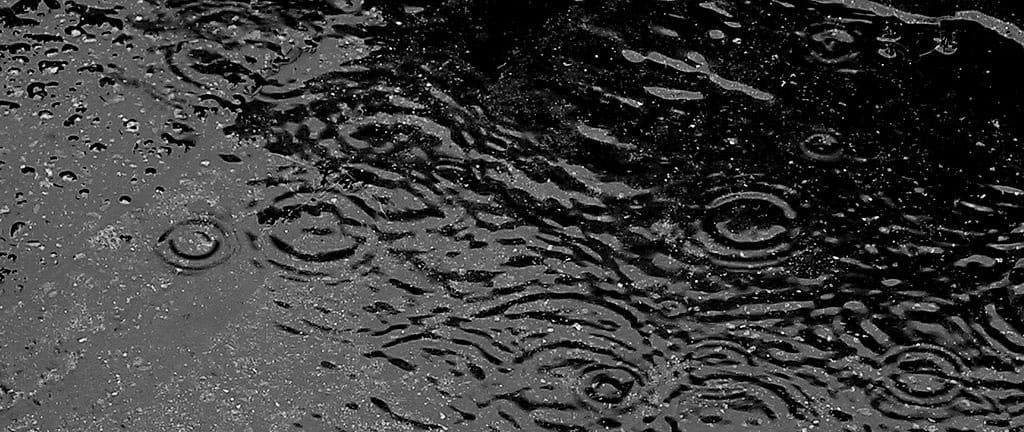
Flooding
The number one contributor to urban flooding is impervious surface. Concrete and asphalt do not absorb water and instead create runoff from flash flooding from stormwater during rain events. Stormwater runoff floods streets then moves into homes and businesses creating extreme flood damage and safety hazards. Drainage systems for impervious surfaces can quickly get overcome and overwhelmed by heavy rain as they have limited inlets and storage capacity.
Pollution
Pollution is one of the most significant problems of impervious pavement. The reason impervious pavement creates pollution is because when water runs off impervious surfaces, it picks up pollutants that are not filtered out. Then, this water goes straight into storm drains and then into ponds, streams, rivers, and lakes, contaminating these water resources. The wildlife in areas with high pollution can be affected, and public health can also be negatively affected which is a major problem.
Stagnant Water Puddles
If the impervious pavement surface does not have enough drainage, then stagnant water puddles can accumulate. This can be a serious issue because these puddles can be a hazard to drivers traveling on the roads. Also, stagnant water puddles can be a breeding ground for insects like mosquitoes.
Erosion
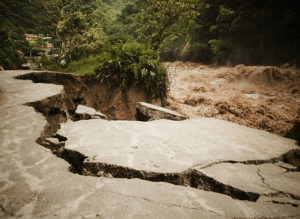
Impervious pavement surfaces often collect and distribute extremely large amounts of water during periods of heavy rain and storm. When this water runs off into rivers, it can create floods which can result in massive erosion. The floods can also be hazardous for people who live near rivers, and for their property.
Water Table Recharging Issues
With impervious pavement, water does not seep into the ground and gradually make its way to natural aquifers. Instead, it is rapidly pushed into rivers and streams. This can result in groundwater being used too quickly, leading to premature depletion of aquifers. This can create major problems for the agriculture industry as well as the general public.
Overheating
Impervious pavement surfaces tend to absorb a large amount of heat. In fact, they create pockets of heat called “heat islands,” in developed areas. This can make them exceptionally uncomfortable to walk on during the warmer months of the year. These heat islands will often increase the air temperature in highly dense areas as well.
The Benefits of Pervious Pavement
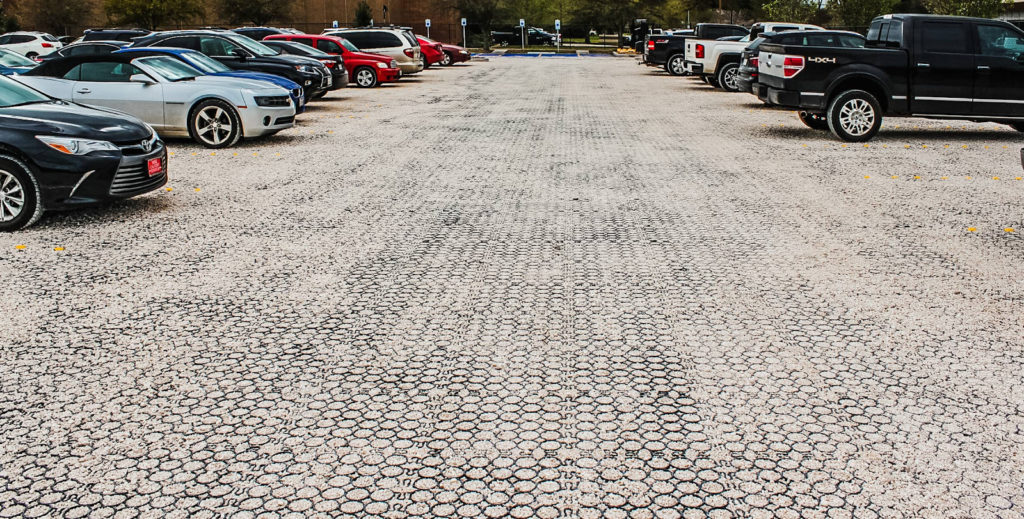
Pollution Reduction
With pervious pavement, surface water does not run across the pavement picking up pollutants, like it does with pervious pavement. Instead, it goes into the ground. When it goes into the ground, pollutants are filtered out naturally instead of being swiftly carried into rivers and streams as they are with impervious pavement.
No Stagnant Water Puddles
Unlike with impervious pavement, water does not build up and create puddles on pervious pavement surfaces during rain storms. This makes pervious pavement roads and parking lots safer and less likely to become natural breeding areas for mosquitos. Drivers are far less likely to hydroplane on pervious pavement roads than they are on impervious pavement roads.
Decreased Erosion
Because pervious pavement allows water to pass through it, the water ends up going down into the soil and then into the natural aquifers. This prevents massive amounts of water from flooding into the streams and rivers, overflowing, and then causing significant amounts of erosion. Erosion can be a major problem for ecosystems. So, reducing it can be very beneficial for the environment.
Improved Water Table Recharging
When more water is flowing through the pavement instead of down sewer drains, it makes it easier for the water table to recharge properly. This reduces the risk of aquifers drying up or being overused. It is also just better all-around for the ecosystem when the water table is charged properly.
Reduces Overheating
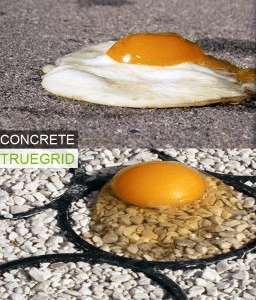
Pervious pavement does not trap heat like impervious pavement does. It also does not create the so-called heat islands that impervious pavement creates. This makes it much better for inner cities and other densely populated areas where people are walking on pavement regularly. Pervious pavement can go a long way towards keeping cities and other developed areas cooler during the summer.
Aesthetic Appeal
Many people find pervious pavement surfaces to be much more aesthetically appealing than traditional impervious pavement. Also, parking spaces and other boundaries can be naturally designed into the pervious pavement without the need for paint.
These boundaries can be very attractive. Furthermore, vegetation surrounding pervious pavement areas tends to be significantly more robust, healthy, and beautiful. This is because the water table is more charged and is thus able to better support the growth of the plants. So this is ideal for city planners, homeowners, and anyone else who may want to have healthy plants growing alongside their paved areas.
Reduced Need for Drain Systems
Drain systems can be expensive to put in, complicated to design, and they reduce the total developable area. Pervious pavement drains water naturally. So, there is really no need for a drainage system. Or, at the very least, there is a dramatically reduced need for a drain system. This makes construction and development projects significantly easier to both design and build. It also gives the developer much more room to develop.
Opt for Pervious Pavement over Impervious
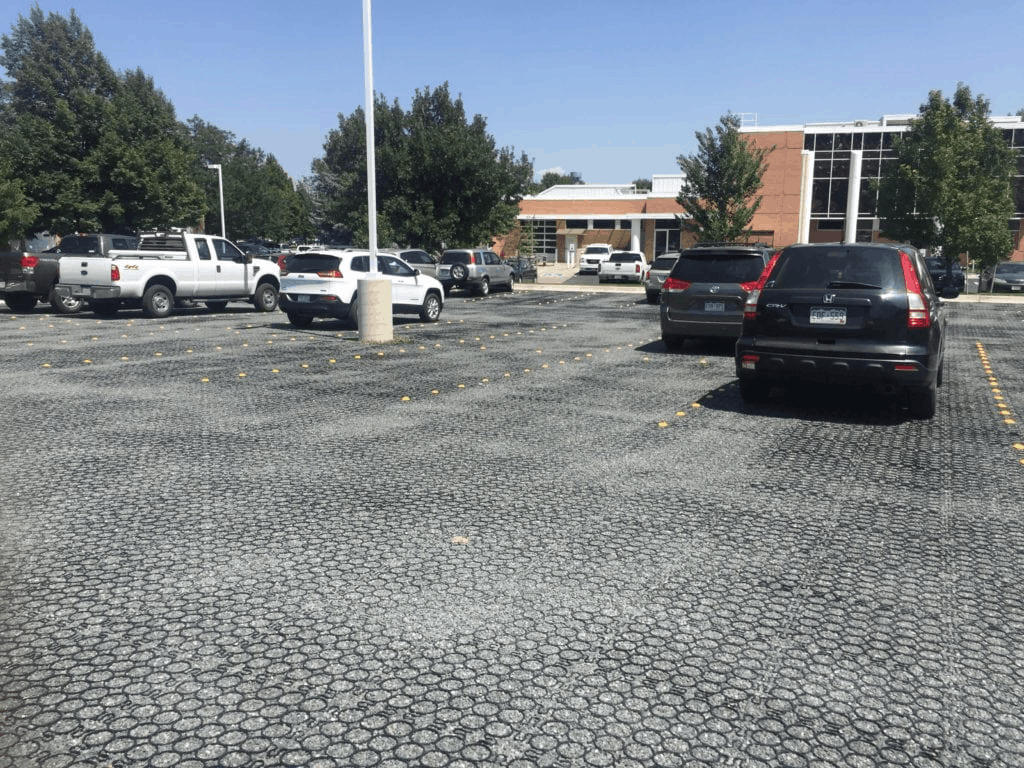
Impervious pavement has served its purpose in history. It has given us the ability to create roads, parking lots, and other surfaces that we’ve needed for many decades. However, pervious roads are the future. They are just so much better all-around, that it is impossible to see how they won’t continue to be used more and more. This is especially true considering the fact that it is more important than ever to properly manage both pollution and the water table.
If you would like to speak to an expert about pervious pavement, then call TRUEGRID today! We look forward to speaking with you and helping you get the ideal pervious pavement for your paved surface project.
Did you know that a large percentage of roads in America are unpaved? These types of roads can be found almost anywhere, but they present a unique set of challenges when it comes to maintaining them over the long term. Unpaved roads produce a lot of dust, for instance. This dust is easily blown away by wind, wears down the road and can even cause incremental amounts of damage to the vehicles that kick it up as they drive.
Road Dust Control Solutions
Dust on gravel roads can not only cause cosmetic damage to the vehicles that drive on them, but if you’re responsible for taking care of the road you could actually incur fines because of it as well. There are numerous reasons why loose dust on gravel roads can be a problem, but fortunately, there are also a wide variety of ways to address this problem as well.
Here are 6 ways you can go about solving the problem of dirt road dust control:
1. Windbreaks
Dust itself isn’t so much the problem as is what happens when the dust is blown away by wind or passing vehicles. Preventing wind from blowing dust on a roadway can be a great start to your dust control strategy. Installing windbreaks like hedges, plants, fences, or berms is a good start.
2. Spraying Water
Dust mitigation can also be achieved through spraying water. Wetting the topsoil of a road or driveway prevents it from blowing away in the wind. This is a good dust palliative for humid areas, but in dry areas, it doesn’t last very long. Plain water can be used for this process as well as water mixed with another type of chemical adhesive or oil. Water mixed with an additional coagulant will typically perform a bit better than just plain water.
3. Gravel Roads
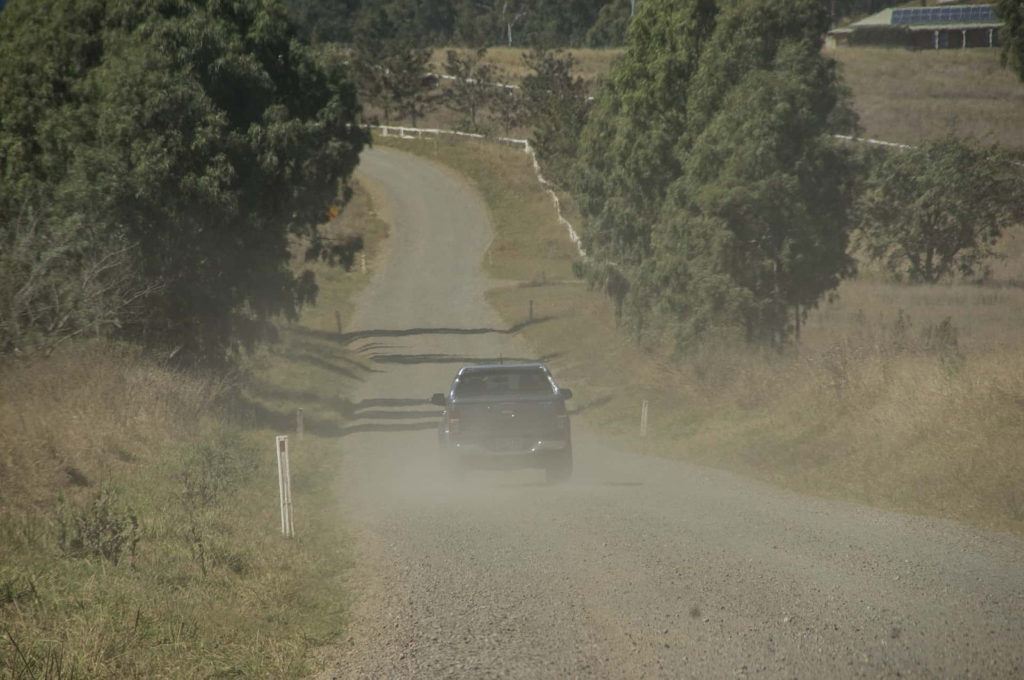
Gravel itself can also be a solution to dust control on construction sites, in mines, on unpaved roads. Adding gravel to the top layer of soil on a road gives the road a hard surface which can act as a buffer between the wheels of vehicles and the road itself. This is not a long-term strategy for road dust suppression, however, because gravel needs to be constantly anchored to the road surface with soil adhesives or aggregate mixes. Gravel, depending on the hardness, can become pulverized and turn into dust over time, adding to the problem. Frequent maintenance is required with a gravel only solution.
4. Reduced Vehicle Speed
This is probably the easiest method to implement. Reducing the speed limit will immediately lower the amount of dust kicked up by traffic. Even lowering the speed limit just a few miles per hour can make a big difference when it comes to dust control.
5. Salt
Salt is one of the best road dust control products available. Lignin Sulfonate and Calcium Chloride are two of the most popular unpaved road dust control products. These salts are mixed in a 35% solution and applied directly on the unpaved road.
They work by soaking up water from the air, thus keeping the top level of soil damp enough to prevent it from turning into dust. When it comes to road dust control products, salts like these two are some of the most effective options. They do come with environmental concerns, however.
6. Permeable Pavers
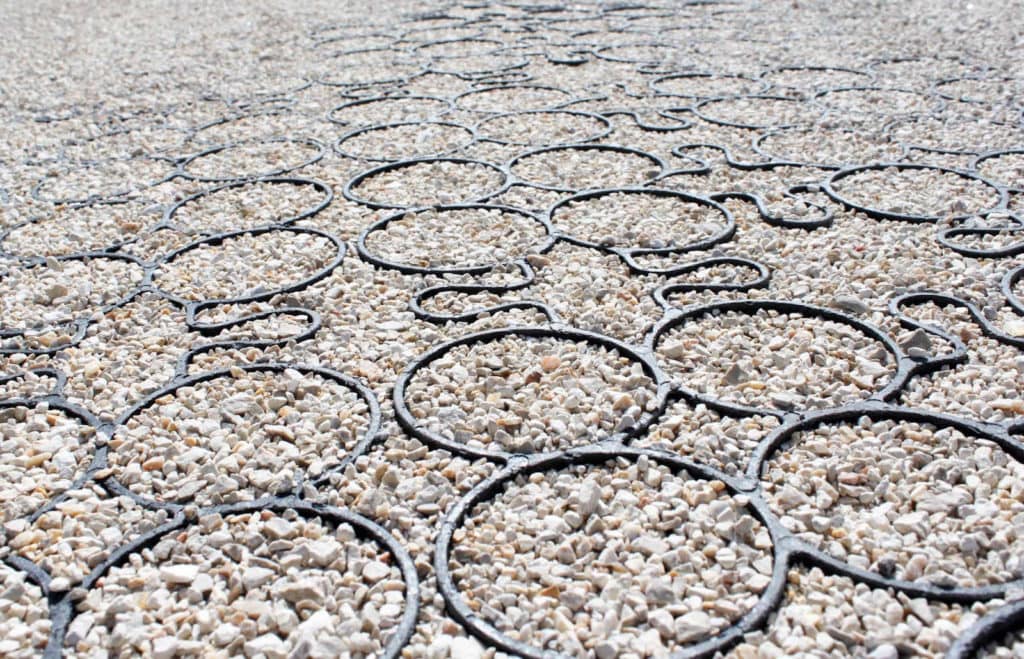
A more permanent alternative to common road dust control products is a permeable paver like the kind offered by TRUEGRID. These pavers work by locking gravel into place underneath them, effectively eliminating dust and preventing the gravel underneath from becoming pulverized.
All you need to do is fill in any low spots and level the road with gravel before having the paver installed over the top of the road. Once locked into place, the road will not kick up dust, and it will also be able to safely handle stormwater runoff as well, thanks to its permeability. This is one of the best long-term options for dust control on unpaved roads because it eliminates the need for reapplication of harmful chemicals, liquids, vapors, and more. The cells of the pavers prevent pulverization of the gravel fill and eliminate dust.
Permeable pavers also prevent ruts from developing, stop the movement of gravel, stop mud from forming, and offer better drainage.
Stop Buying Gravel Road Dust Control Products
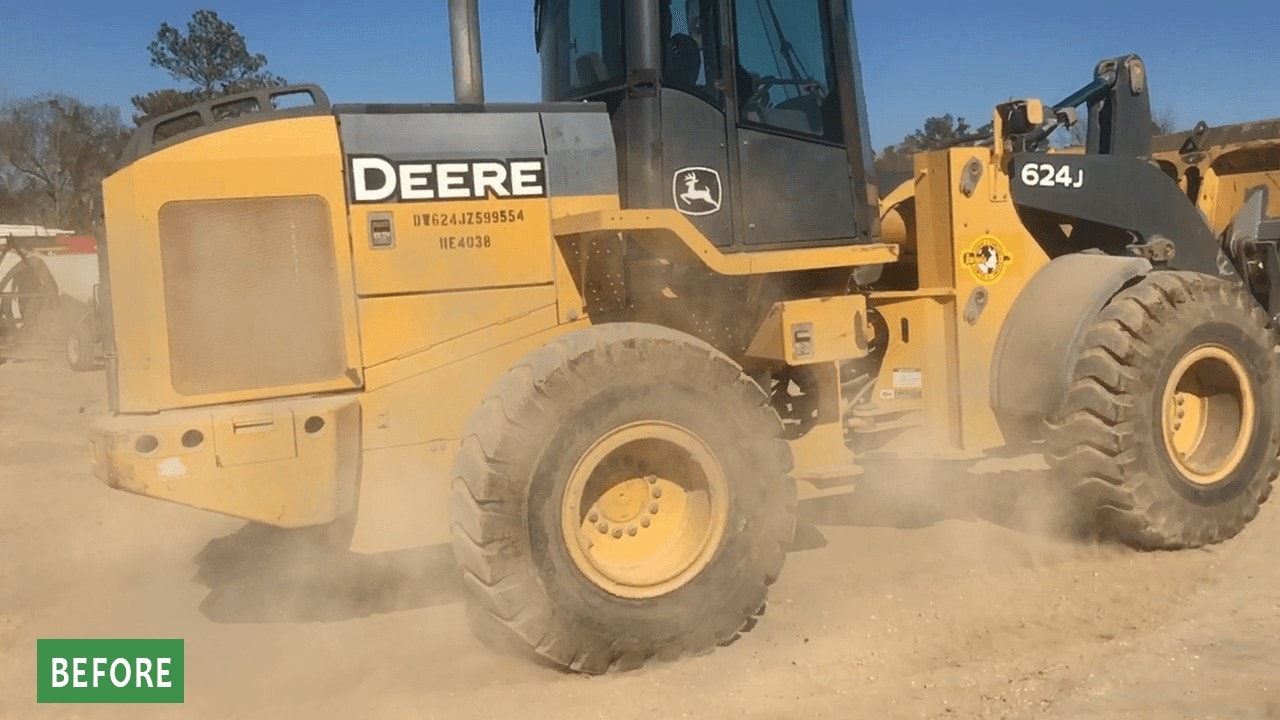
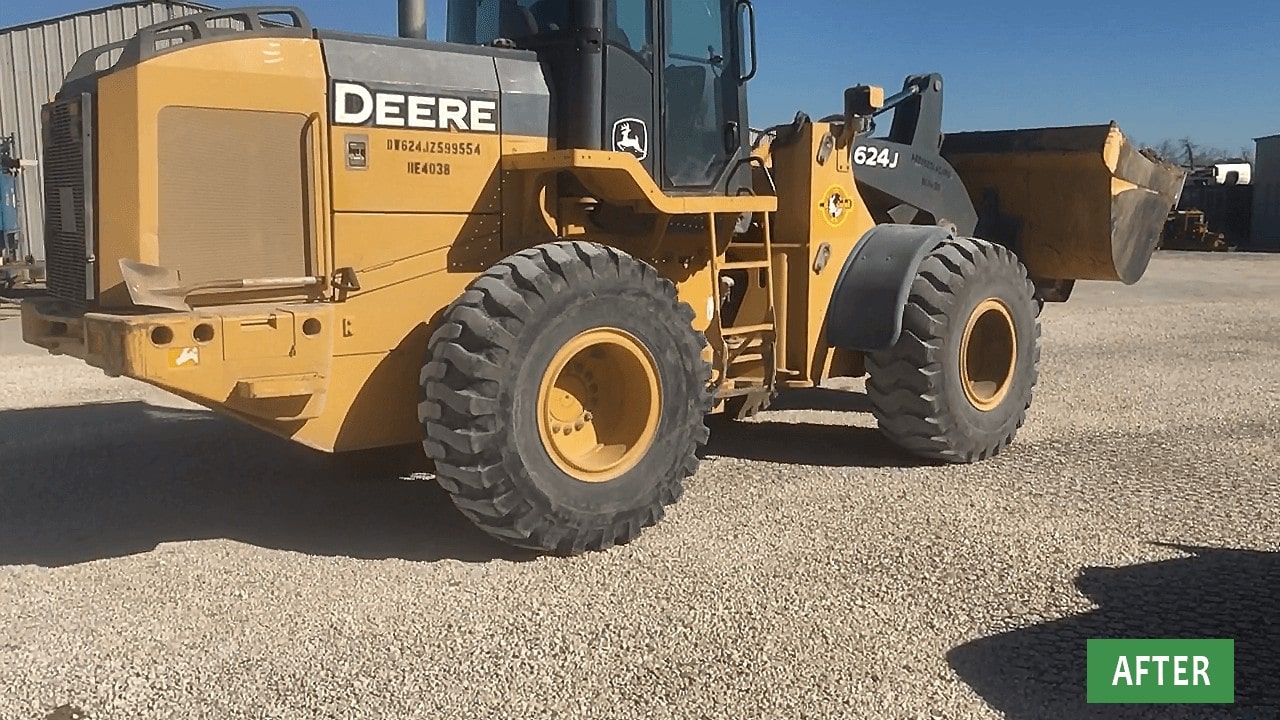
Rather than continue to purchase and apply road dust control products like salt and/or treated water, why not apply a one-time, permanent solution? Whether you want to maintain a regular road, a driveway, or some other type of area that will see a lot of vehicle traffic, there’s no better choice than a permeable paver.
Salts, water, and other chemicals for reducing dust on dirt roads can be effective in the short-term, but they require constant reapplication. Lower speed limits and windbreaks are also somewhat effective, especially when combined with other methods, but they too fall short in terms of long-lasting protection. When it comes to a permanent solution to controlling dust on your road or driveway, you can’t do any better than a permeable paver.
Dusty roads can do damage to vehicles and even incur fines, and dusty driveways will cause your vehicle to require more frequent car-washings at the very least. If you want to not only treat, but eliminate dust on your road or driveway, you need something that can get the job done once and for all.
By installing a permeable paver over a leveled, gravel road, you will lock that gravel into place and prevent it from becoming pulverized, turning into harmful dust. Minimizing and treating dust can be done through a variety of strategies, but only permeable pavers can keep dirt roads safe and drivable for years to come.
Contact TRUEGRID for more information on controlling road dust.
Storms and heavy downpours of rain happen somewhat often in most parts of America. While they aren’t an everyday occurrence, most people in the U.S. are going to experience a big downpour of rain at least a handful of times throughout the year.
Rain storms can be great for crops and the environment, and you might even enjoy them a bit yourself. But, these downpours carry within them the potential for big problems as well. The stormwater they create needs someplace to go, and it can’t always soak into the ground.
If you have solid slabs of non-permeable material like concrete, asphalt, or other material anywhere near your property, the stormwater that lands on it is going to pool up and eventually spill over into areas that could be problematic. If you get water pooling near the foundation of your property, flooding is right around the corner.
Stormwater Runoff Management
There are, however, ways to prevent stormwater from pooling up near the foundation of your property and causing issues elsewhere as well. Here are 7 ways you can effectively attack the issue of stormwater management when the occasion arises.
1. Infiltration Trenches
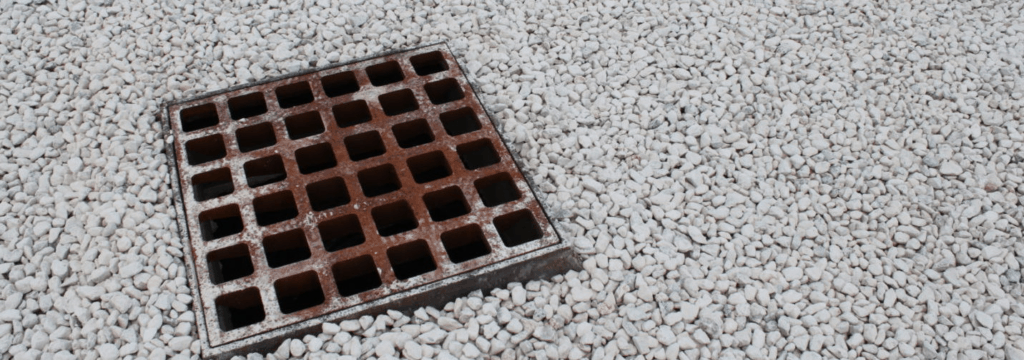
If you expect only small but frequent storms or only one large storm per year, infiltration trenches can be a good option for your property. These are trenches ranging from 3 to 12 feet in depth. They are lined and then filled with some type of aggregate which will collect the stormwater runoff and direct it back into the ground. You can use this method for frequent, larger stormwater events as well as long as you combine it with another water runoff management strategy.
2. Green Roofs
This is a new trend emerging that provides you a variety of benefits in addition to stormwater management. Green roofs work by collecting rainwater and using it to sustain various different types of vegetation which are situated directly on top of the roof. It also filters excess water and moderates the flow of it into nearby sewers which prevents any overloads from happening.
These roofs can be used to grow fruits and vegetables, and they’ll also net you some LEED credits which can also save you money.
3. Underground Storage Tanks
Another option for property owners is to install an underground storage tank. Otherwise known as cisterns, basin, or collection tanks, these tanks are usually made from fiberglass, concrete, steel, or plastic. They are typically placed underneath areas such as driveways, parking lots, and other areas where stormwater cannot pass through.
The ground will be sloped at a certain point to allow the drainage of excess stormwater directly into the tanks. They are covered by aggregates which help to collect the excess water and drain it into the tank.
4. Permeable Pavers
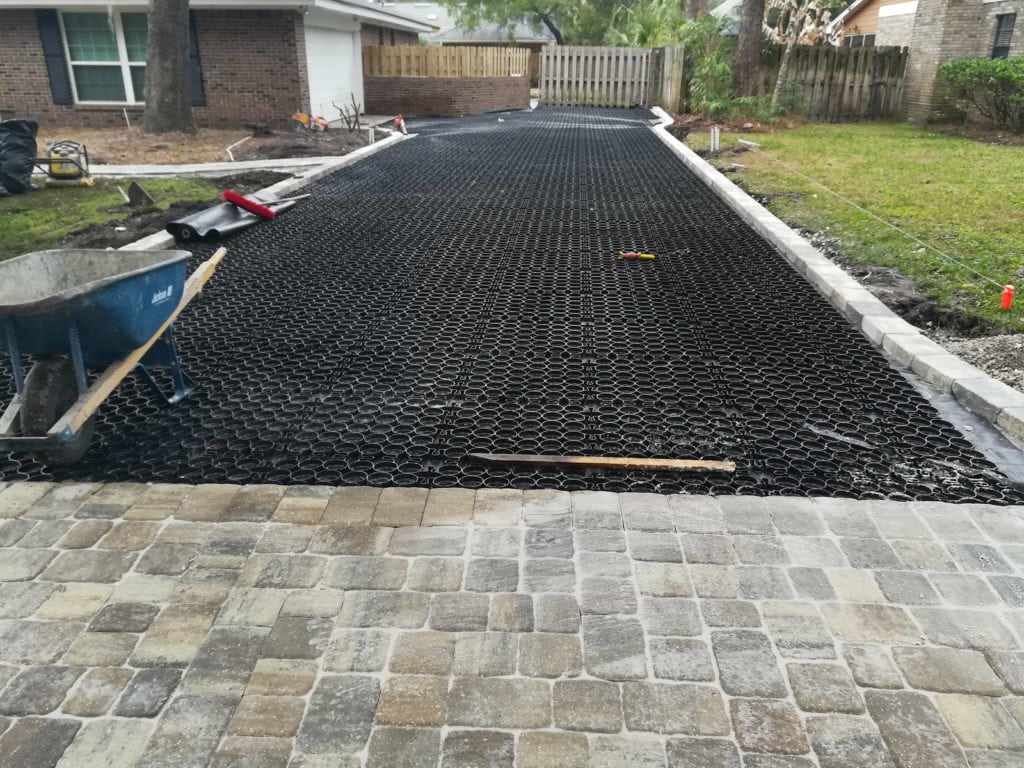
One very popular method of managing excess stormwater runoff is the use of permeable pavers. These pavers are used in place of traditional concrete and asphalt, and can be used anywhere from residential to commercial or industrial areas.
Permeable pavers such as the kind offered by TRUEGRID are environmentally friendly, incredibly durable, and sponge-like in their ability to reduce flooding by absorbing and retaining water. With permeable pavers in place, you never have to worry about managing runoff because there won’t be any. The water goes right through the pavers and into the ground where it belongs.
Make sure your permeable pavers possess flex joints so that they won’t crack even when the seasons change and the soil moves. The cells that hold the gravel will eliminate the migration of gravel. Be certain the plastic pavers you choose don’t require any clips or staking , but instead lock together with easy male/ female connections. They’ll work in all soils and climates and will last for over 20 years, eliminating floods, ruts, and puddles for decades to come. Whether you own an industrial, commercial, or residential property, permeable pavers make the perfect addition to your stormwater management system.
5. Protective Trees
Trees also make a great choice for helping to manage the flow of excess stormwater runoff on your property. It’s a well-known fact that tree roots are adept at filtering and absorbing stormwater runoff. For this reason, it makes sense to plant a few protective trees around your property.
Combined with other stormwater management systems, this method can work wonders. Permeable pavers that allow water infiltration to the soil and tree roots are great to maintain healthy trees, as opposed to hardscape like asphalt and concrete which choke off water supplies to the trees.The canopies of protective trees also help to slow the amount of rainfall hitting the ground as well as spreading it over a larger area.
6. Native Plants
Rather than artificial turf, you may want to swap out the fake grass on your property for more native, natural plants. Native plants are much better at dealing with the extremes of nature and will grow much more easily. They also absorb more rainwater and are naturally good at helping prevent flooding.
7. Eliminate Bare Soil
Bare soil is can be your worst enemy in terms of managing excess stormwater runoff. It can be similar to concrete when it comes to blocking water from entering the ground. If you have bare soil anywhere on your property, you’d do well to cover it up with a layer of something like mulch or another type of ground cover.
Creating an Effective Stormwater Management System is Easier than You Think

Managing stormwater runoff should be on your mind if you own property of any kind. Almost every area of the U.S. will see a big downpour of rain at least once per year, and this can cause big problems if the excess runoff isn’t managed correctly.
Permeable pavers, underground storage tanks, green roofs, infiltration trenches, native plants, and protective trees are all options to help you manage the inevitable excess runoff you’ll see on your property. By combining a few of these strategies, you can prevent any problems from occurring during the next big storm in your area.

